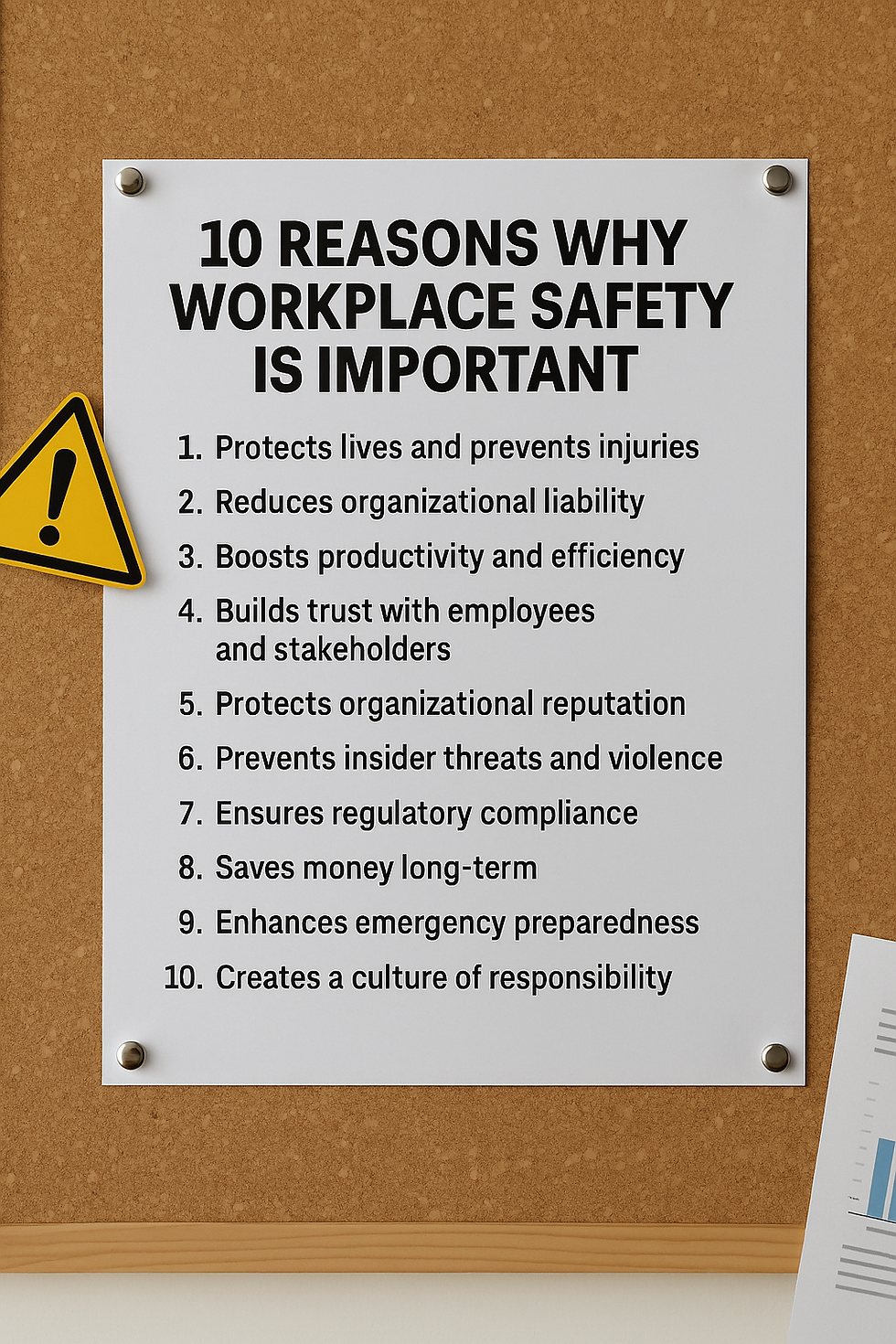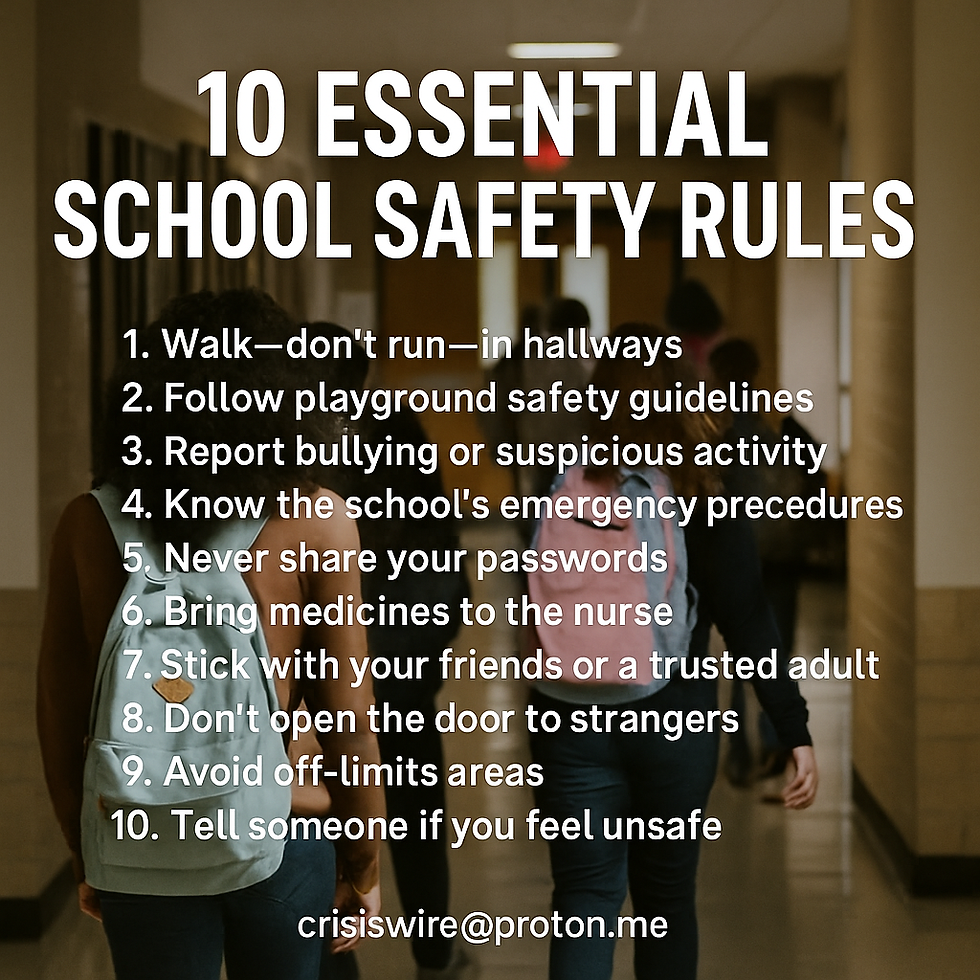Mapping Your Safety: How Geospatial Threat Assessment Shapes Smarter Business and Campus Decisions
- CrisisWire

- Oct 9
- 4 min read
By CrisisWire — Managing Threats. Protecting Futures.
Introduction: The Invisible Map of Risk
Every organization—whether a global enterprise, a university campus, or a family-owned business—exists within a geography of risk. Some of it’s visible: crime rates, police response times, flood zones. Most of it, however, is hidden in layers of infrastructure, human behavior, and accessibility that only appear when something goes wrong.
CrisisWire, a USA-based leader in physical threat assessment and geospatial security analysis, has built a new model for understanding those hidden layers—before they become liabilities. By merging advanced mapping tools, law enforcement experience, and behavioral risk science, CrisisWire helps clients determine not only how to secure a property, but where to build one in the first place.
Whether assessing a Honolulu corporate campus, a retail chain in Los Angeles, or a university expansion in Texas, CrisisWire consultants approach every assignment as both investigators and architects—charting the unseen terrain of risk that determines long-term safety and resilience.
Understanding the Terrain: Why Location Shapes Security
Most security professionals focus on what happens inside the perimeter. CrisisWire starts outside it. Using data from public-safety records, environmental risk databases, and geospatial imagery, the firm identifies external vulnerabilities that directly influence a site’s threat profile.
These include:
Crime density mapping: Proximity to high-crime corridors or historically violent neighborhoods.
Critical infrastructure adjacency: Nearby utilities, ports, or transit systems that could become collateral risks.
Emergency response routes: Access points for law enforcement, medical, and fire response.
Socio-behavioral trends: Community demographics and activity patterns that affect on-site safety dynamics.
This layered analysis produces what CrisisWire calls a Risk Radius Map—a geospatial visualization that quantifies exposure, probability, and impact. The approach combines lessons from both tactical law enforcement operations and modern emergency management frameworks, including FEMA’s NIMS and DHS’s NTAC standards for threat prevention.
From Mapping to Decision-Making
Selecting the right site is as much a security decision as it is a financial one. A company can invest millions in fortifying a facility but fail to recognize that its geographic placement exposes it to avoidable risks—criminal activity, evacuation challenges, or even hostile vehicle access.
CrisisWire analysts conduct on-the-ground reconnaissance paired with digital mapping tools to assess:
Building ingress/egress flow
Natural surveillance points
Vehicle approach angles and anti-ram potential
Surrounding crime heat maps
Evacuation corridors and emergency shelter zones
These findings are synthesized into comprehensive reports that inform leadership and design teams during the pre-construction or relocation phase.
It’s a form of preventive architecture—one that prioritizes human life, operational continuity, and legal defensibility.
Case Study: Hawai‘i’s Campus and Corporate Expansion
When a university on O‘ahu prepared to update its policies and emergency preparedness procedures, it enlisted experts from CrisisWire to conduct a full-scale geospatial threat and vulnerability analysis.
The resulting report revealed several overlooked factors:
High nighttime traffic routes bordering campus perimeters
Limited vehicle-standoff distances
Unlit pedestrian corridors along access roads
Insufficient surveillance overlap near parking structures
By repositioning lighting arrays, reinforcing controlled-access gates, and realigning security patrol routes, the university reduced its overall exposure risk by more than 40%.
This integrated methodology—drawing from insights in Campus Under Siege: Why Universities Are Soft Targets—and How to Fix Them—is now part of CrisisWire’s signature process for all educational clients.
Leadership Liability: Making Security a Board-Level Decision
Geospatial analysis isn’t just about maps—it’s about accountability.
Executives and administrators have a duty of care to anticipate foreseeable risks, a standard reinforced in The Prepared Leader: Threat Assessment, Emergency Preparedness, and Safety for Colleges, Institutions, and Businesses.
Failing to account for location-based vulnerabilities—such as poor access control, high-incident proximity, or inadequate emergency egress—can expose leaders to financial, legal, and reputational damage.
CrisisWire’s reports provide not only data but also board-ready documentation that strengthens insurance claims, satisfies compliance audits, and demonstrates proactive leadership.
Tools of the Trade: Technology Meets Experience
CrisisWire analysts utilize a range of geospatial intelligence tools (GIS), predictive analytics, and 3D risk modeling. But what distinguishes them is the human factor—decades of field experience in law enforcement, military protection, and emergency management.
Founder Warren Pulley, a former LAPD officer and DHS/FEMA-certified emergency manager, designed the firm’s methodology around the same operational mindset that drives elite protective programs. His experience documented in Uniformed Silence (An LAPD Memoir) underscores the cultural, behavioral, and tactical dimensions that algorithms can’t measure.
When combined with the architectural insight found in Locked Down: The Access Control Blueprint for Safer Schools, Colleges, and Corporate America, CrisisWire’s analyses become a synthesis of art and science—human observation paired with machine precision.
Beyond Hawai‘i: Scaling the Model Nationwide
Although rooted in the USA, CrisisWire’s consulting framework is fully scalable. Remote threat assessments are now delivered via digital briefings, interactive maps, and virtual walkthroughs.
From Los Angeles to Tokyo, from school districts to Fortune 500 boardrooms, the demand for location intelligence in security planning is accelerating.
For corporate clients, the firm integrates principles drawn from Unmatched Arsenal: The Past, Present, and Future of U.S. Military Power, applying strategic-defense logic to private-sector site design.
For educational clients, Campus Under Siege remains the standard—demonstrating how predictive mapping and behavioral threat assessment intersect to create resilient institutions.
Actionable Takeaways: What Clients Learn
Choose locations scientifically, not emotionally. Use objective threat data, not “good neighborhoods.”
Design perimeters for purpose, not appearance. Integrate physical barriers, camera fields, and access control zones at inception.
Map human behavior as much as terrain. Understand how populations move, gather, and react to stress.
Demand accountability at the leadership level. Duty of care begins with informed decisions about where and how to build.
Mapping the Future of Safety
Physical security is geography made personal. Every street, corridor, and entry point tells a story—and only those who can read it can truly protect what matters most.
CrisisWire helps leaders read that map.
By combining threat assessment, behavioral analysis, and geospatial intelligence, the firm empowers businesses, schools, and government agencies to build safer futures from the ground up.
📍 Learn more or request a consultation at CrisisWire: Managing Threats. Protecting Futures.






Comments